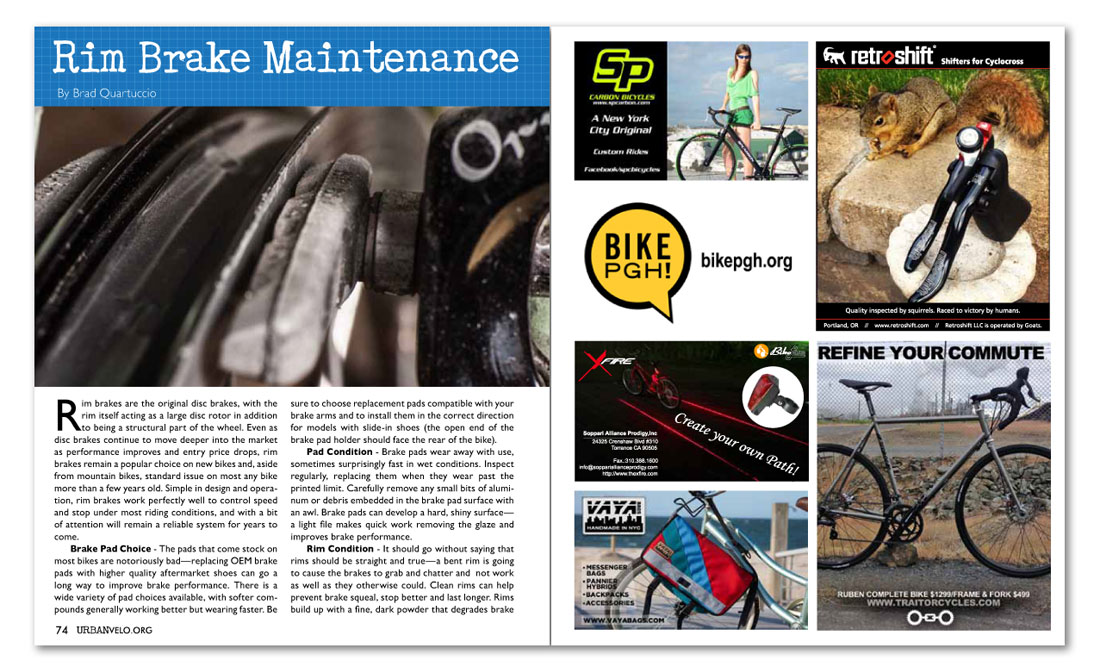


Rim Brake Maintenance
Brad Quartuccio
Rim brakes are the original disc brakes, with the rim itself acting as a large disc rotor in addition to being a structural part of the wheel. Even as disc brakes continue to move deeper into the market as performance improves and entry price drops, rim brakes remain a popular choice on new bikes and, aside from mountain bikes, standard issue on most any bike more than a few years old. Simple in design and operation, rim brakes work perfectly well to control speed and stop under most riding conditions, and with a bit of attention will remain a reliable system for years to come.
Brake Pad Choice - The pads that come stock on most bikes are notoriously bad—replacing OEM brake pads with higher quality aftermarket shoes can go a long way to improve brake performance. There is a wide variety of pad choices available, with softer compounds generally working better but wearing faster. Be sure to choose replacement pads compatible with your brake arms and to install them in the correct direction for models with slide-in shoes (the open end of the brake pad holder should face the rear of the bike).
Pad Condition - Brake pads wear away with use, sometimes surprisingly fast in wet conditions. Inspect regularly, replacing them when they wear past the printed limit. Carefully remove any small bits of aluminum or debris embedded in the brake pad surface with an awl. Brake pads can develop a hard, shiny surface—a light file makes quick work removing the glaze and improves brake performance.
Rim Condition - It should go without saying that rims should be straight and true—a bent rim is going to cause the brakes to grab and chatter and not work as well as they otherwise could. Clean rims can help prevent brake squeal, stop better and last longer. Rims build up with a fine, dark powder that degrades brake
SP Carbon
BikePGH
Traitor Cycles
Vaya
Retroshift
X Fire